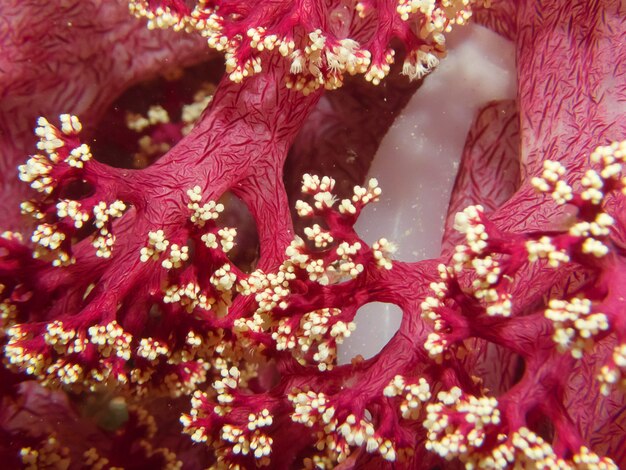Microplastics and Cancer: Separating Fact from Fiction 🌿
In recent years, the environmental and health impacts of microplastics have become a hot topic of discussion. These tiny plastic fragments can infiltrate our ecosystems, water sources, and even our bodies, raising concerns about their potential to cause harm. One of the most pressing questions is: Do microplastics cause cancer? In this article, we'll delve into this complex issue, exploring the science behind microplastics, their potential health effects, and how we can mitigate their impact on our lives.
Understanding Microplastics: What Are They?
Microplastics are minute plastic particles less than 5 millimeters in diameter. They originate from the breakdown of larger plastic debris or are manufactured as microbeads used in personal care products. These particles are pervasive, found in oceans, soil, and even the air we breathe.
Sources of Microplastics
- Industrial Processes: Microplastics are often produced during industrial processes, including plastic manufacturing and product wear and tear.
- Personal Care Products: Many exfoliating facial scrubs, toothpastes, and body washes contain microbeads.
- Textile Fibers: Synthetic clothing, especially when washed, releases tiny plastic fibers into water systems.
How Microplastics Enter the Body
Microplastics can enter the human body through various exposure routes:
- Inhalation: Microplastics present in the air can be breathed in.
- Ingestion: Consuming seafood, water, or food contaminated with microplastics.
- Dermal Contact: Direct contact with products containing microbeads.
The Question of Cancer: Can Microplastics Be the Culprit?
The question of whether microplastics cause cancer is complex, requiring consideration of multiple factors. Some key points include:
Looking at the Science
- Toxicology Studies: Research on microplastics' health effects is still nascent. Some studies suggest that microplastics can lead to oxidative stress, inflammation, and cellular damage, which could potentially initiate cancer. However, direct causal links are yet to be firmly established.
- Chemical Additives: Microplastics can leach harmful chemicals, such as phthalates and bisphenol A (BPA). These substances are known endocrine disruptors and have been linked to cancer in high concentrations.
Comparing to Other Environmental Risks
While microplastics raise concerns, it's vital to weigh their potential cancer risk against other known carcinogens like tobacco smoke, asbestos, and UV radiation. The current evidence about microplastics does not present a clear-cut cancer risk on par with these well-established factors.
Navigating the Debate: Health Risks Beyond Cancer
Although cancer is a significant concern, microplastics may pose additional health risks that merit attention:
Potential Health Effects
- Respiratory Issues: Inhaled microplastics can cause respiratory distress or exacerbate asthma.
- Digestive Problems: Consumed microplastics may lead to gastrointestinal discomfort or nutrient absorption interference.
- Endocrine Disorders: As previously mentioned, the chemical additives in plastics can disrupt hormonal balance.
Environmental and Ecological Implications
Microplastics also pose broader environmental hazards, affecting wildlife and ecosystems:
- Impact on Marine Life: Ingestion can harm aquatic organisms, leading to bioaccumulation in the food chain.
- Soil Contamination: Microplastics in soil can affect plant growth and soil health.
Proactively Addressing Microplastics: What You Can Do
While completely avoiding microplastics may not be feasible, there are practical steps individuals can take to reduce exposure and environmental impact:
Personal Lifestyle Changes
- Reduce Plastic Use: Opt for reusable bags, bottles, and containers.
- Choose Natural Fibers: When selecting clothing, prefer natural over synthetic fabrics.
- Be Informed: Check product labels for microbeads and avoid where possible.
Supporting Broader Initiatives
- Advocacy: Support policies aimed at reducing plastic production and waste.
- Clean-Up Efforts: Participate in local cleanup events to remove plastic litter from natural spaces.
The Path Forward: Research, Regulation, and Responsibility
Addressing the microplastic crisis is a shared responsibility involving individuals, industries, and governments. Continued research and informed policies are crucial in mitigating the risks associated with microplastics:
Enhancing Scientific Understanding
- Funding Research: Increasing funding for studies on the health impacts of microplastics.
- Innovative Solutions: Developing eco-friendly alternatives to traditional plastics and refining waste management techniques.
Policy and Regulation
Governments have a role in regulating the production and disposal of plastics:
- Legislation: Introduce bans on microbeads in cosmetics and enact stringent regulations on plastic waste.
- Global Cooperation: Address plastic pollution through international agreements and collaborations.
The Truth Behind Microplastics and Cancer
To summarize, while microplastics are an emerging environmental and health concern, the direct link between microplastics and cancer is not fully understood and requires more research. However, given their potential to cause harm, it is wise to take preventive measures to limit exposure and advocate for environmentally sustainable practices. By staying informed and active, we can collectively work towards a healthier and more sustainable planet.
Practical Takeaways 🌟
- Limit Plastic Exposure: Use reusable items and avoid products with microbeads.
- Support Research: Encourage and fund studies on microplastics' health impacts.
- Advocate for Change: Push for policies reducing plastic pollution.
- Stay Informed: Follow the latest research and adapt practices accordingly.
In a world where plastic use is ubiquitous, understanding and managing its impacts on health and the environment is imperative. With collective effort, we can reduce microplastics' presence and potential hazards, paving the way for a healthier future.

Related Articles
- Are Breast Cancer Lumps Painful
- Are Chills a Sign Of Cancer
- Are Colon Spasms a Sign Of Cancer
- Are Lytic Lesions Always Cancer
- Are Polyps Cancer
- Can a Blood Test Detect Cancer
- Can a Ct Scan Detect Cancer
- Can a Dexa Scan Show Cancer
- Can a Gastric Emptying Scan Show Cancer
- Can a Lung Biopsy Cause Cancer To Spread